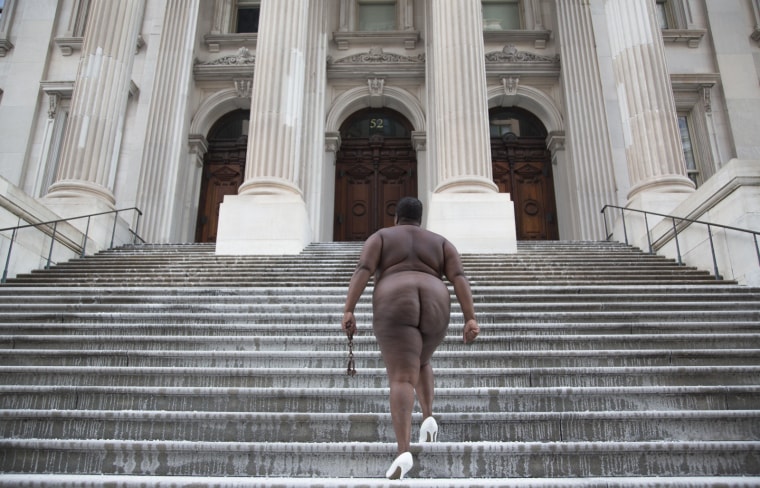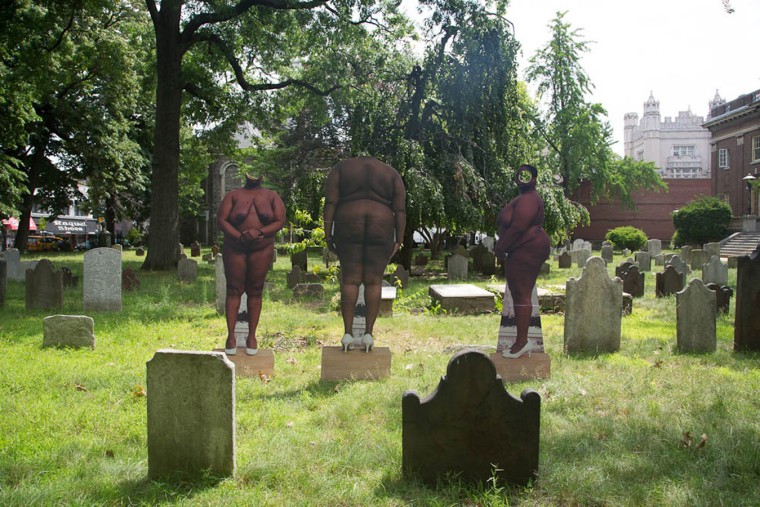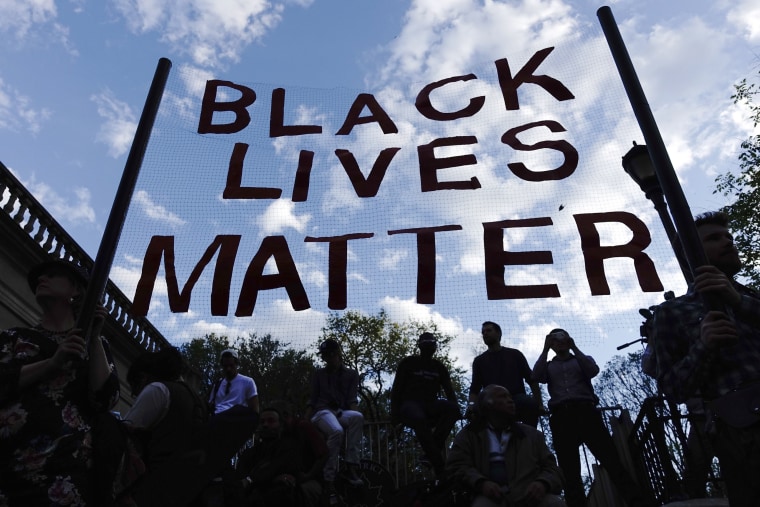"You hate me don't you?"
This question posed by Kendrick Lamar over a cacophonous beat on his song, “The Blacker the Berry,” was a direct response to his lyrical rundown of the anti-blackness African Americans have faced under white supremacy.
He goes on, "you want to exterminate us," which, he rhymes, could be the only desire of a system that has worked tirelessly to maintain our subordination.
Lamar's poetic dissertation on this song (from his album “To Pimp a Butterfly”) is so brash and unapologetic it makes me both incredibly uncomfortable while simultaneously filled with black pride by his truth slaying. The truth isn't meant to comfort us--it's meant to move us towards action.
What Kendrick Lamar did lyrically over tight beats, artist Nona Faustine does visually with her photographic series "White Shoes".
"White Shoes" takes us through a historical pilgrimage through a New York City many would like to keep buried. Faustine travels to former slave trading posts and strips down, bearing not only her body but her soul as she forces us to examine the sites that millions so casually walk by oblivious to the torture, humiliation, and dehumanization that occurred at the hands of former Titans of industry and "masters of the universe".

The imagery of her standing naked on the steps of City Hall and on Wall Street with the past juxtaposed against the present, where we like to believe we've evolved from such savage treatment of other humans—and yet not too far from these locations black bodies lay dead in the streets, shot to death, strangled of life because of the perceived threat of their very existence.
"White Shoes" awakens an unconscious society to the reality that black bodies are of no worth, no value except for how they can be used for the perpetuation of white dominance. It prevails with each black body snatched from society by white fear—a reminder much like the auction block that we don't belong. We are ornamental, removable.
When I spoke with Nona she spoke of the consciousness-raising aspect of her work:
“Americans need to recognize who these people were that participated in the industry of slavery. You have an entire industry right now that is trying to eradicate this country’s connection to slavery—we need to have an open conversation. I hope that NYC puts up plaques, has interactive maps, so we can walk this history. Other cities have this—history trails, slavery trails—in NYC there was such a deep shame in the city’s involvement in the slave industry that they haven’t wanted to recognize it. There was a deliberate effort to hide this history.”
Her point is a vital one. If we refuse to critically examine our history we will be destined to repeat it. Right now we have school districts like Texas that have literally rewritten the history books to undersell the brutal practice of slavery.
Chris Rock once lamented that true progress will happen when black people are essentially allowed to be average—or to just be themselves. To me, progress will have arrived when our bodies, our lives aren't othered. When we can look at our dark history and own it and make good on the promise of justice and liberty for all. When the skill and fortitude of African American athletes like Serena Williams can be acknowledged for more than "animalistic prowess", but instead for strategic thinking.
When cartoons aren't created to compare the First Lady of the U.S. to an ape or a savage. When white women aren't celebrated for appropriating the style and bodies that black women like Saartji Baartman have been literally placed on display for. When measures of blackness stop being beautiful, or edgy only when it’s wrapped in whiteness.
As you view Faustine art work you can’t help but think about how black women have been robbed of their femininity and purity at the hands of white supremacy. This fact is not lost on the artist, she said this:
“When you think about Delia and Baartman (two female slaves whose bodies were put on display as sideshows) it puts the black body in a canyon. You see how those bodies were critiqued and placed on display on because they were outside of western ideals of beauty.Then you have us now in 2015 and listen to the characterizations of Serena’s body to those of animals, FLOTUS being compared to an ape, their bodies picked apart. Then I think about me as a black woman and how I’m perceived—a way to dismiss black women and the validity of our existence.Photography was used in the 19th century to formulate these ideas, these stereotypes of blackness. Think about this, the first images of black people are of enslaved people and they were taken to show that we were not human—to discredit our humanity. This is where mug shots came from. Side, front and back.”

As Faustine stands in her white shoes unable to escape white patriarchy standing boldly almost defiantly—owning her body in a space where our ancestors were sold, she stands now in tribute to their sacrifice but also as a reminder that loving and owning our blackness remains a revolutionary act—necessary because we are still at war with the manifest destiny of white supremacy.
Each act of love towards our curves, our hair, our varied shades of chocolate breaks down the structure that would have us believe we don't matter. Each achievement, each barrier crushed and ceiling shattered unravels the white patriarchal matrix that wants to keep us on those auction blocks.
Kendrick asks if they hate us, Nona compels them to see us and I implore us to love ourselves, to take up the space that is ours—stand tall, bold and black—white shoes and all.

